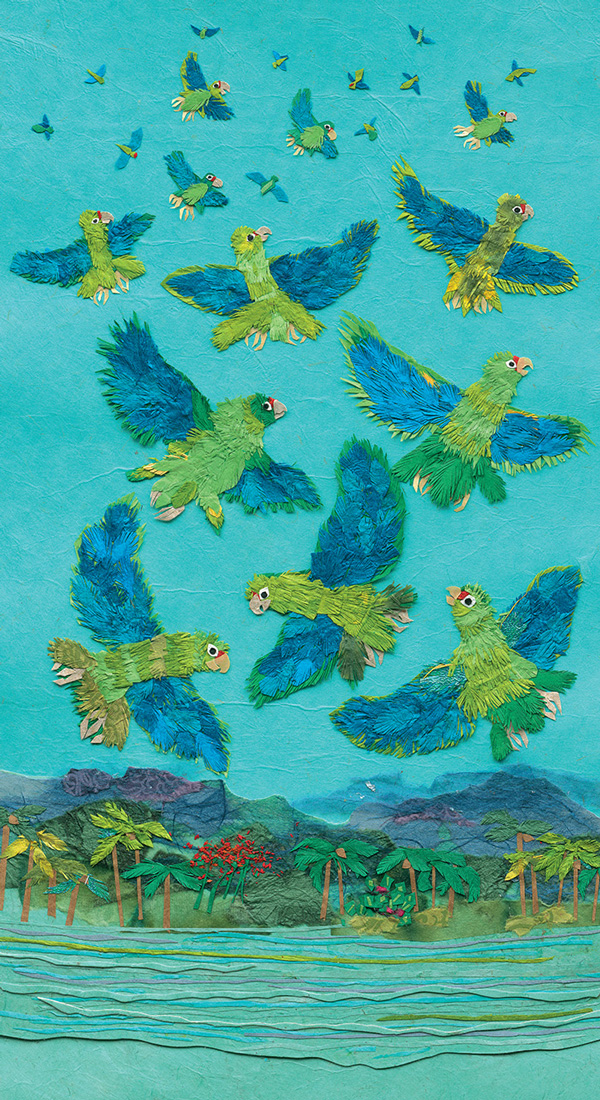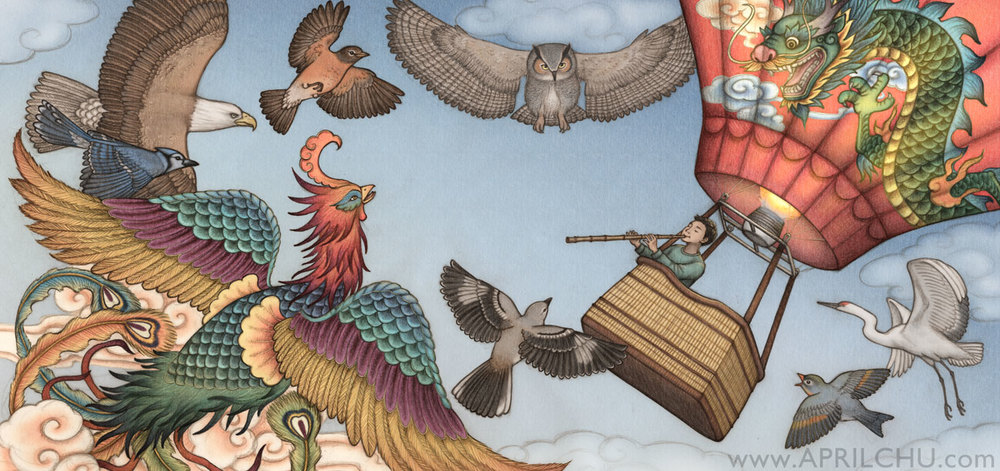Today is Non-Fiction Picture Book Sharing, #nf10for10, hosted by Cathy Mere, Reflect and Refine: Building A Learning Community and Mandy Robek, Enjoy and Embrace Learning. Below find ten nonfiction picture books I can't live without and how I might use these texts as mentor texts with children.
 |
(1). Nelson, S.D. (Standing Rock Sioux Tribe) (2014). Digging a Hole to Heaven: Coal Miner Boys. New York: Abrams.
 |
| S.D. Nelson's Ledger Art Work |
I waited anxiously for this title to be released as I have read all of S.D. Nelson's books and am a fan of his artwork and his writing. I am always learning when I read his work. It was the ledger book art he did in Crazy Horse's Vision (written by Joseph Bruchac) that first drew my interest. (You can see some of his Ledger book art style work here). I also have a fascination about books about coal mining. So in September when I first received Digging a Hole to Heaven, I dug in. The acrylic paintings are moving, dark at times, and extend the text which is a blending of fiction (a 12-year-old boy's experience in the mines) and informational. Nelson also includes archival images alongside his own art.
Rich writing. Multigenre.
Mentor Text Suggestion: How to author multigenre, narrative technique, using archival images (historical photographs) alongside made art, managing large topics, sensory writing, research, use of author note, use of fact boxes and side bars,
 |
| from Parrots Over Puerto Rico. |
(2). Roth, Susan & Cindy Trumbore. (2013). Parrots Over Puerto Rico. Illustrated by Susan Roth. New York: Lee & Low Books.
When I first read Roth & Trumbore's The Mangrove Tree: Planting Trees to Feed Families, I knew immediately I would include it an a read aloud unit I was designing at that time for second grade about inspiring people. I had not heard of Dr. Sato and was interested to learn more about him and his work. The writing was lyrical and informative and the art--well then art just knocked me out. Susan Roth's collages are works to imitate. So intricate.
So, I was interested to read and view Parrots Over Puerto Rico. The book tells about the rescue and return of the Puerto Rican parrot which has been endangered. The book was awarded the 2014 Robert F. Sibert Award for the most distinguished informational book for children published in 2013. It is rich in description, has the most amazing collages I've seen in a children's book, and conveys an important environmental history of parrots and the work that has been done to stem their extinction.
Mentor Text Suggestions: Use of direct address (second person), How to tell information in interesting and suspenseful ways, figurative language, sensory language, layout, collage, research, use of stunning facts (By 1975 only 13 parrots remain), research
 |
(3). Debon, Nicholas. (2006). Four Pictures by Emily Carr. Toronto, ON: Groundwood Books.
One of my go-to publishers is Groundwood Books. In Four Pictures by Emily Carr, Nicholas Debon teaches us how to look mindfully at art through his telling of four paintings that Emily Carr, the Canadian artist, made. Four Pictures by Emily Carr focuses on four paintings that express different periods of Carr's life. Debon's writing (a mixture of informational text and first person narrative) and illustration work (comic strips) allows us to know Emily Carr deeply. This cartoon-biography is well researched and well rendered.
Mentor Text Suggestions: how to use cartoon format as a vehicle for biography, author's perspective, how to summarize, use of speech bubbles, 1st person narration, text organization
 |
| from Summoning the Phoenix: Poems and Prose About Chinese Musical Instruments. |
(4). Jiang, Emily. (2014). Summoning the Phoenix: Poems and Prose About Chinese Musical Instruments. Illustrated by April Chu. New York: Lee & Low Books.
I was fascinated when I read this book. Set as a narrative (13 children ready themselves for a musical performance), the text also includes free verse poetry and side-bar informational text about the history of each of the traditional Chinese musical instruments.
Mentor Text Suggestions: How to author multigenre, description, free verse poetry, being curious about a topic, narrowing a topic
(5). Aruego, Jose & Ariane Dewey. (2002). Weird Friends: Unlikely Allies in the Animal Kingdom. San Diego, CA: Gulliver Books Harcourt.
I include this picture book in a first grade unit of study about animals. Children love this book and it is one they want hear and read again and again. There's so much to learn. Aruego and Dewey discuss 14 pairs of unlikely animals who are connected as each helps the other to survive.
Mentor Text Suggestions: asking questions about a topic, narrowing a topic, science writing, extended metaphor
 |
| from Separate Is Never Equal: Sylvia Mendez and Her Family’s Fight for Desegregation. |
(6). Tonatiuh, Duncan. (2014). Separate Is Never Equal: Sylvia Mendez and Her Family’s Fight for Desegregation. New York: Abrams.
Duncan Tonatiuh tells about Sylvia Mendez's family's fight for desegregation in California in 1947. This is an important topic and one not often found depicted for young children. I appreciate the important slice of history Tonatiuh takes on in this picture book and how his use of Mixtec codex art builds cohesion between the visual work and the written text. 2015 Pura Belpré Illustrator Honor Book and a 2015 Robert F. Sibert Informational Honor Book
Mentor Text Suggestions: Cohesion of text and art, use of archival images, how to use dialogue to progress a story, research, narrowing a topic, attending to a complex topic well
 |
| from Twenty-two Cents: Muhammad Yunus and the Village Bank. |
(7). Yoo, Paula. (2014). Twenty-two Cents: Muhammad Yunus and the Village Bank. Illustrated by Jamel Akib. New York: Lee & Low Books.
Several years ago in a unit of study I wrote four fourth graders featuring books about Nobel Prize winners, I included information about Muhammed Yunus. I was delighted this past summer to read Paula Yoo's picture book biography about Yunus. Yoo's biography is well told and researched. There's humor, critical slices of life, and apt description. Akib's pastels are powerful and draw the eye.
Mentor Text Suggestions: How to select slices of life when writing a biography, connecting the lead and the ending, how to simplify complex topics, research, using pastels, bold illustrations
 |
(8). Weatherford, Carole Boston. (2015). Gordon Parks: How the Photographer Captured Black and White America. Illustrated by Jamey Christoph. Chicago, IL: Albert Whitman & Company.
Carole Boston Weatherford's poetic biography about Gordon Parks, the photographer, has been on my to read list well before it was published. I have an interest in Parks' works and have enjoyed the books I've read by Weatherford. Her writer's voice is always compelling. I was suprised when reading this text of how straightforward Weatherford's biography (as poem) was rendered. I also appreciated the way Jamey Christoph illustrated the text by digitally rendering images of Parks as photographs.
Mentor Text Suggestions: Using poetry to tell a biography and to shape a text about civil rights and race relationships, Power of single word sentence, Use of present tense, how to include background information that is not part of the central text, reading about a topic/profession that interests you, archival images, author's note
 |
| from Frog Song |
(9). Guiberson, Brenda Z. (2013). Frog Song. Illustrated by Gennady Spirin. New York: Henry Holt.
I included this picture book in a read aloud unit for first graders. Children are fascinated by the descriptions of the unusual frogs and marvel at the illustrations. Brenda Guiberson introduces the reader to eleven unique frogs from different places in the world. The illustrations are portraits of each frog painted by Gennady Spirin. The writing is powerful (strong verbs) and relies at times on the use of onomatopoeia in order for the reader to hear the frog being described. The art work is nothing less than magnificent.
Mentor Text Suggestions: use strong verbs (“bellow, clang, rattle, sing, trill, warble, whistle"), parallel structure, onomatopoeia, narrowing a topic, portrait painting

(10). Jenkins, Steve & Robin Page. (2014). Creature Features: Twenty-Five Animals Explain Why They look the Way They Do. New York: HMH Books.
25 unusual animals explain why they look the way they do as you look the in the eye. A classic Steve Jenkins & Robin Page book.
Mentor Text Suggestions: Interesting Question and answer format, essential question, narrow topic (What's your most unusual feature?) cut paper art, use of a biblography

Mary Ann,
ReplyDeleteThank you for sharing your ten favorites. I appreciated your mentor text suggestions with each title and the way you often view the books with an artistic lens. Cathy
Thanks Cathy. I am enjoying the other postings on the google+ page. Making a list:)
DeleteSo happy you could join us. Most of your titles are new to me and how kind of you to include suggestions for using the books within our teaching.
ReplyDeleteThanks Mandy. Most of these texts I have included in read aloud units of study I've made during the last few years. Really appreciate the rich resource on The google+ page.
DeleteThank you for the suggestions on how to use the texts, that is one piece I haven't seen yet in the posting! I wrote down Weird Friends, with the idea that yes we could use it in a study. But I'm wondering how it would be to connect with in Social-Emotional work. The idea of unlikely friendships is really resonating with my class this year.
ReplyDeleteThe idea of unusual friendships resonates with children. The biology of partnership relationships can be dense for children. Somehow this book makes that work a bit easier for kids to understand.
DeleteThank you for your suggestions on how to use these books as mentors. I've reserved a few of them to share with teachers in my building.
ReplyDeleteGreat Julie. I love children's books and pleased to be able to share this list:)
DeleteSo many titles I didn't know. You have a bunch of lucky first graders in your class.
ReplyDeleteThank you, Annette.
Delete